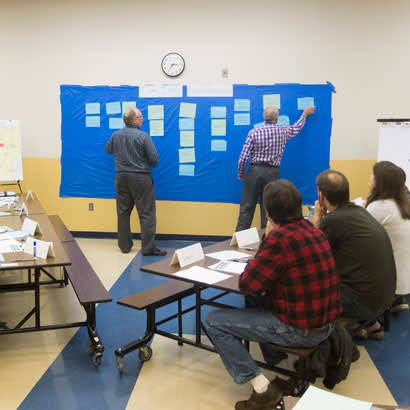
From Chile to Oregon
Parque Araucano lies 60 miles off the South Pacific coast in Santiago, Chile, where I studied abroad in summer 2017. In a nation where a small percentage of the population uses private gyms, free outdoor-fitness amenities became widespread about five years ago in response to the country’s rising level of obesity. In addition to its many other amenities — there’s a skate park with sponsor logos worked into the design as “graffiti” — Parque Araucano’s outdoor fitness equipment is popular.
In fact, sponsorships, particularly through the decade-long work of the nonprofit Fundación Mi Parque, are what have enabled Chile to invest in open space beyond Santiago, in underserved communities up and down this long, skinny country. According to Consuelo González, marketing and finance director for Mi Parque, the organization works with disadvantaged neighborhoods to design and build playgrounds and parks that are true community spaces. She emphasizes that, while environmental sustainability is a nice benefit of parks, social equity is the driving factor behind the organization’s efforts.
Mi Parque was founded in 2008 by architects Julio Poblete and Martín Andrade in response to Chile’s housing policies that moved people to places with very empty common spaces. To address the disparity in access to green spaces in impoverished areas, Mi Parque pairs social workers with architects in two-person teams that, during the park design phase, hold interactive workshops to involve the community. The team then builds further ownership through collaborative construction and installation before turning over the responsibility for park maintenance to the local government.
Fifty-five miles off the Pacific coast but much farther north (in Beaverton, Oregon), Tualatin Hills Park & Recreation District (THPRD), where I am the interim operations analysis manager, has embraced a similar approach to community engagement in the park planning process. Community conversations now take place much earlier in our planning process to involve the public in more of the decision making. Gery Keck, THPRD’s design and development manager, and Nicole Paulsen, the urban planner, initially worked with a consultant to bring this enhanced process in-house, culminating in multiple successful engagement projects and a newly funded staff position dedicated to advancing social equity. Most recently, an engagement and partnerships specialist position was added to our design and development department. This role will also assist other departments, such as maintenance operations, and nature and trails.
For new or redeveloped parks, THPRD holds community conversations during which participants are asked broad questions about what they value in their neighborhood park and how it can enhance livability in their community. Paulsen believes this helps participants move beyond their individual perspective to view the park as a community asset. Staff then groups the findings around certain themes, such as safety or activities for all ages, and uses them to develop a vision statement for the site. “No matter how diverse the participants,” Paulsen notes, “they tend to gravitate toward similar themes, which highlights how unifying a community space can be.”
To encourage attendance and participation in these meetings, THPRD staff first builds partnerships with trusted sources in the community, from nonprofits that can act as a liaison to traditionally underrepresented populations, to local schools. For example, Keck describes how THPRD held a meeting in conjunction with an afterschool program when parents would be picking up their children. To make it even more convenient for the families, THPRD provided food and children’s activities so the parents could stay and participate in the conversation.
THPRD also holds community workshops where attendees, with guidance from staff, can use to-scale cutouts of park amenities to craft their own design concepts for the site around utilities, permitting and other constraints. Again, THPRD looks for opportunities to reduce barriers to participation, from offering meetings on Saturday mornings instead of busy weeknights, to addressing language access. THPRD has offered Spanish language-only public meetings to involve more diverse community members in park design and has seen an increase in turnout. Keck explains that the longer-term goal is to hold meetings where more community members participate together and reflect the diversity of the population, regardless of language differences, perhaps using translation services.
Under this enhanced engagement process, a new park may undergo up to 12 public meetings throughout the design phase, from the initial community conversations and workshops, to the board meeting for design approval. This new process takes about a year, but THPRD views it as central to the mission. Paulsen points out: “We have been focusing our efforts on constructing parks that are in underserved areas” — both socioeconomically and to balance distribution of parks throughout service boundaries. A side benefit is that the time invested up front actually speeds up the design process and enhances community support for the final design.
Fundación Mi Parque and THPRD’s approaches are proactive, creative ways to connect with and better serve disadvantaged populations. The progress at home and abroad speaks to how the park and recreation industry can empower and improve communities in any geography.
Katherine Stokke is the Interim Operations Analysis Manager for Tualatin Hills Park & Recreation District.

